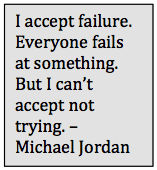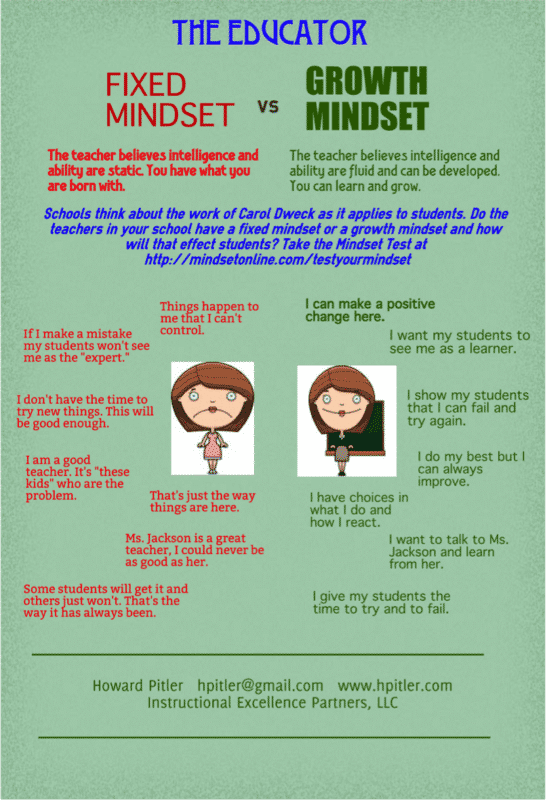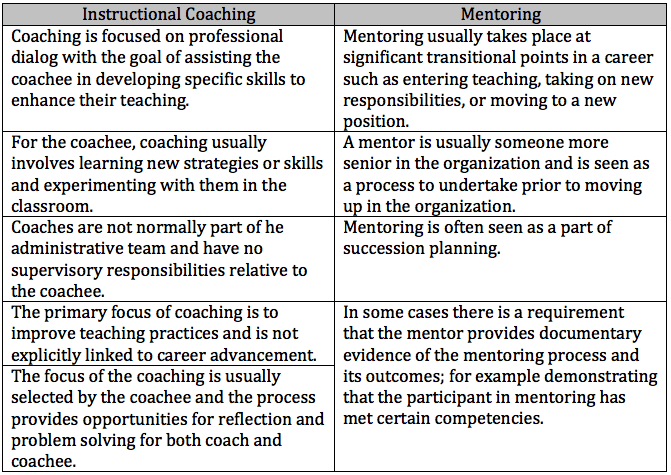Table of Contents
A Model to Build Instructional Coaching CoherenceEditor’s Note: This is Part One of a Two-Part Series
by Howard Pitler, Ed.D.
Background
Districts are increasingly investing professional development resources on internal staff serving as instructional coaches. This is an excellent way to build capacity within an organization and invest in the most important resource a district has – its people.
In many districts, the process is to first identify their master teachers and then reassign them as coaches, with the idea that since they are excellent teachers, they will be able to help other teachers grow. This, however, is often a hit-or-miss proposition. What is it specifically that coaches should be doing? What protocols should be in their educational toolbox? How can coaches best engage teachers in reflective practice? How will district staff know if the coaching provided is consistent from building to building and coach to coach?
Instructional coaching should be school-based and job-embedded. A coach’s relationship with the coachee is built on trust and confidentiality. The relationship should encourage teacher reflection and collaboration. An instructional coach is not an evaluator and must establish clear boundaries between the coach and the administrator.
Purpose

Quality instructional coaching is connected to a school’s improvement plan and the district strategic plan. According to the Annenberg Institute, “Instructional coaching is fundamentally about teachers, teacher leaders, school administrators, and central office leaders examining practice in reflective ways, with a strong focus on student learning and results as the ultimate barometer of improvement.”
Guiding principles
 All educators will benefit from coaching.
All educators will benefit from coaching.- Coaching must be individualized based on the performance level and needs of the coachee.
- Job-embedded learning provides the most authentic context for learning.
- A coaching cycle should focus on agreed-upon goals with both the coach and coachee reflecting in progress toward those goals.
- Educators, like students, benefit from timely and specific feedback that can be immediately applied in the classroom.
Before instituting instructional coaches
Before starting an instructional coaching program, there are four conditions that should be attended to:
1. Develop a positive school culture
For a coaching program to be successful, it is important to have developed a culture in the school oriented toward growth and focused on the idea that everyone can and should improve. Listen to the language being used as teachers talk about students and their work. If you are hearing language like, “these kids don’t care about school,” “don’t think math is important,” and “these parents just want us to babysit,” it will be difficult for instructional coaches to have the desired impact. Teachers need to feel that the challenges they and the school are facing are manageable. They need to feel empowered to influence the organization and know they can work together to impact change.
 Spend time internalizing the work of Carolyn Dweck on Mindsets. It will take a strong and knowledgeable leadership team to shift a school’s culture from what Dweck refers to as a fixed-mindset to a growth-mindset. While much attention has been paid on developing a growth-mindset in students, we also need to be sure we are paying attention to our teachers’ and coaches’ mindsets.
Spend time internalizing the work of Carolyn Dweck on Mindsets. It will take a strong and knowledgeable leadership team to shift a school’s culture from what Dweck refers to as a fixed-mindset to a growth-mindset. While much attention has been paid on developing a growth-mindset in students, we also need to be sure we are paying attention to our teachers’ and coaches’ mindsets.

2. Ensure that there are structures for collaboration
If you truly want instructional coaching to be successful be sure there are designated times within the school day for coach/coachee conversation and collaboration to occur. Coaching should not be an add-on to the workday. While one-on-one coaching is a model many are familiar with, research has shown that more growth can occur when teachers work on small teams.
A good grouping strategy would be groups of three. Instructional triads allow all voices to be heard and make it very hard for a one person to fade into the background. An instructional coach can work well as a resource to this instructional triad. Triads should meet at least weekly with the intent of learning from each other.
Teachers can either visit each other’s rooms to observe short lessons or arrange to video a short part of a lesson. The conversation at the meeting is about what was observed during the lesson, how did it work compared to the intent, and what did we learn. This isn’t about critiquing and tearing each other down, but rather to learn from and get ideas from one another.
3. Clearly establish what an instructional coach is and is not
It is naïve to think it is easy to establish and maintain clear boundaries between an instructional coach and the administration, but it is essential to the process for this separation to be maintained. An instructional coach is not an additional administrator and certainly not an evaluator. There should be an open line of communication between the building principal and the coach, but the coach shouldn’t be expected to share any specifics about the coaching relationship other than the agreed upon goals of the coaching sessions as defined by the teacher and coach. Of course, if there are things occurring in the classroom that are blatant violations of school policies or general law, the coach would have an obligation as a mandatory reporter to bring that to the attention of the principal and/or others.
An instructional coach has to earn and maintain the trust and confidence of the coachee. A teacher must feel safe and able to risk mistakes as they grow and move from their current pedagogy habits to a new one. William Bridges in his book Managing Transitions: Making the Most of Change identifies this as the Neutral Zone. He sees that there is a Neutral Zone we inhabit on the journey between the ending of our previous state and the beginnings of our new state. It can be a strange and confusing place but also one with great potential and latent creativity. Bridges “describes this as a different and potentially creative phase where experiments can happen, and people can become innovative and enthusiastic, given the right focus. …Creativity can be boosted by stepping back and asking key questions about the way that things are done.” We want instructional coaches to be able to guide teacher up to and then through the Neutral Zone.
The terms coaching and mentoring are often used interchangeably. While they are very similar, they are not the same. The Centre of the Use of Research and Evidence in Education in the United Kingdom says mentoring is a structured, sustained process for supporting professional learners through significant career transitions. Instructional Coaching is a structured, sustained process for enabling the development of a specific aspect of a professional learner’s practice. The following table adapted from Lofthouse et al., 2009 illustrates the difference between instructional coaching and mentoring.
4. Provide strong and consistent professional development, tools, and support for instructional coaches
Too often a strong teacher is asked to move into the role of instructional coach without a clear understanding of the role of a coach, the process of coaching an adult learner, and the expectations for success as a coach. At the district level, there should be tools and protocols provided to all coaches, so they follow a consistent coaching model that is coherent with the district strategic plan and therefore, has the support of the central administration and Board. While coaching is highly individualized to the needs of each coachee, a common process can help align the work of a number of coaches throughout the district.
Coaching should be predictable and consistent for both the coach and the coachee. While goals will be highly individualized and should be mutually developed, the process and protocols should be constant. The process should allow for:
- Mutual agreement on the goal for a coaching cycle,
- time for observation by the coachee in the classroom,
- time for the coachee to observe the coach to provide demonstration lessons,
- debrief time after observations,
- built-in reflection by both coach and coachee, and
- clear next steps.
Author
Howard Pitler is a dynamic facilitator, speaker, and instructional coach with a proven record of success spanning four decades
Pitler is an ASCD Faculty member and the author of several ASCD publications including Classroom Instruction That Works, 2nd edition, Using Technology with Classroom Instruction That Works, and A Handbook for Classroom Instruction That Works, 2nd edition. Contact Pitler at hpitler@gmail.com or on his website. Follow Howard on Twitter.
Further Reading
- edCircuit – Using Social Media to Grow and Develop
- EdSurge – Why Teacher-Driven Coaching Looks Different for Every Learner
- Education Week – Why Instructional Coaching Matters in Independent Schools



 All educators will benefit from coaching.
All educators will benefit from coaching.